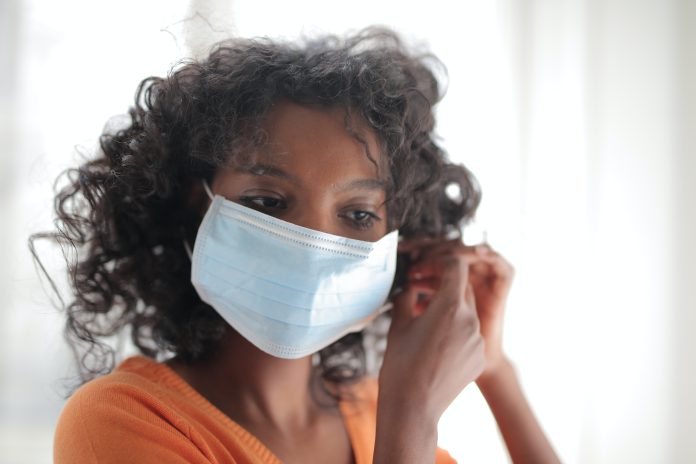
By Breanna Reeves, Black Voice News
Ethnic Media Services hosted a media briefing in partnership with California Black Media and the California Department of Public Health on Dec. 8 to emphasize the importance and availability of COVID-19 therapeutic treatments, and give an update on the latest data regarding the disparities in access among communities of color.
During her presentation, Assistant Health Officer for the State of California and the Director of Population Health at the California Department of Public Health Dr. Rita Nguyen highlighted the progress that has been made in the development of COVID treatments since the start of the pandemic.
“I just wanted to take a moment to really recognize that we have an opportunity here to meet the moment,” Dr. Nguyen said. “This is the first winter surge of a three-year pandemic where we actually have treatments that are highly effective, readily available and free to the public, and we know that most folks aren’t accessing it.”
While COVID treatments exist and are available, some communities have difficulty accessing treatments as a result of not knowing where to get treated and not being offered the option by health providers.

A paper published in the U.S. Centers for Disease Control & Prevention Morbidity and Mortality Weekly Report (MMWR) on October 28, 2022 noted that racial and ethnic disparities persisted in outpatient COVID-19 treatment through July 2022.
The report also found that during April to July 2022, the percentage of COVID-19 patients greater than or equal to the age of 20 years old, who were treated with Paxlovid, was 36% and 30% lower among Black and Hispanic patients than among White and non-Hispanic patients, respectively.
Dr. Nguyen explained that the report noted that communities of color and communities with low-income are the least likely to be using treatment, but have greater risk for severe outcomes as a result of COVID.
In reference to Dr. Nguyen’s presentation on the lack of access to COVID-19 treatments due to not being offered treatment options, Dr. Oliver Brooks, explained that people must advocate on behalf of themselves. Dr. Brooks is the Chief Medical Officer and past Chief of Pediatric and Adolescent Medicine at Watts Healthcare Corporation in Los Angeles, California.
“In terms of treatment, it doesn’t work if you don’t take it or get it offered. So as a person, you need to advocate. You need to know about treatments,” Dr. Brooks said. “I believe that it’s really, really important to have that focus on ensuring that you do have access because the access will not occur if you don’t test, and if it’s not even offered to you.”
There are several free COVID-19 treatment options available to stop COVID-19 illness from getting severe. Treatments must be taken within five to seven days of symptoms showing. Doctors recommend getting a COVID-19 test to confirm and then seek or ask about treatment options.
COVID-19 treatment options include antiviral treatments that “stop the virus from multiplying in your body and infecting more of your cells.” The antivirals are pills called Paxlovid and Molnupiravir that can be taken at home. In addition to antiviral treatments, there is Remdesivir, which is usually given by a health care provider by intravenous (IV) infusion. Remdesivir is given through IV on the first day, then once daily on the second and third day initiated as soon as possible and within seven days of having symptoms.

“Test — that’s crucial. You don’t get to a treatment until you test,” Dr. Brooks said. “I think it’s really important to get that test if you have symptoms.”
Antiviral pills must be prescribed by a medical provider. Once prescribed, a pharmacy like CVS or Rite Aid will provide the pills that are ordered. Health officials encourage those who test positive and who are at risk for severe illness due to COVID-19 to speak with their doctors about treatment options.
The CDPH estimates that the use of Paxlovid in California has prevented between 16,000 and 48,000 hospitalizations and between 4,800 and 10,000 deaths.
Disparities among older adults
In addition to ethnic and racial disparities with access to COVID-19 treatments, there is a disparity among older adults, 65 years of age and older, who account for nearly 90% of COVID-19 deaths in the United States.
“That’s nine in 10. The vulnerability of older adults to viruses is not new. As we age, we accumulate chronic conditions that cause us to have decreased reserves with which to compensate or recover from [stressors] such as infection,” explained Dr. Wynnelena Canio, who is the Clinical Rotation Director in Geriatric Medicine for the Family Medicine residency program at Kaiser Permanente in Santa Rosa, CA.
“A lot of older adults become more frail, losing more muscle mass and becoming more dependent on others after hospitalization, which leads to more disability and possible institutionalization.”
Older adults who are 65 years of age and older account for approximately 71% of COVID deaths in California, but make up 15.6% of the total population, according to state data from Dec. 8, 2022. As of Dec. 1, roughly 35% of older adults 65 years of age and older have received their bivalent booster dose.

“Please get your booster shots. A lot of older adults are not getting them,” Dr. Canio urged.
The CDC recommends that people five years of age and older get one updated (bivalent) booster, if it has been at least two months since their last COVID-19 vaccine dose, whether that was the initial primary series (two doses) or a previous monovalent booster.
Children six months to four years of age are eligible for Pfizer’s vaccine, which is a total of three doses. This age group is not eligible for a booster dose. Individuals ages five and older are eligible for both Pfizer and Moderna’s updated (bivalent) booster dose once they complete their primary series.


